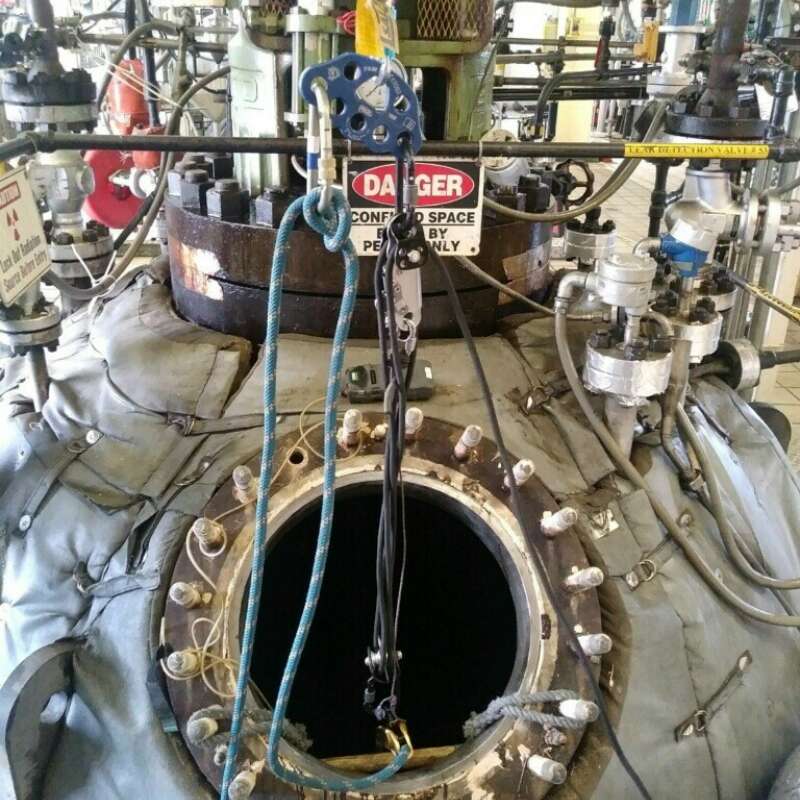It is well recognized that confined spaces can be difficult and potentially deadly places to work. Unfortunately, the number of deaths associated with confined spaces have increased over the past several years, with the number of annual confined space fatalities in the US going from 88 in 2012 to 166 in 2017.
Confined Space Planning
Sadly, many of these fatalities are would-be rescuers not prepared for the task or not trained on the risks of attempting entry. An often-cited NIOSH study from 1986 identified more than 60% of the fatalities involved would-be rescuers. A 1994 NIOSH study identified that of the 70 confined space incidents they investigated, over one-third involved multiple fatalities. These multi-fatality incidents typically involved would-be rescuers.
What Can be Done to Minimize Confined Space Incidents and Fatalities?
First, recognize that confined spaces present unique hazards and risks that warrant special planning and controls. Properly conducting work inside a confined space will prevent an incident and potential need for emergency rescue. OSHA has long-recognized confined space entry hazards and has developed standards for Construction, General Industry and other employers. The OSHA standards are the minimum expectations of employers and establish requirements that predominately apply to Permit-Required Confined Spaces (PRCS) – defined as having at least one of the following characteristics:
- Contains or has the potential to contain a hazardous atmosphere
- Has a material that could engulf someone who enters
- Is configured in such a way that an entrant could become trapped or asphyxiated
- Has any other recognized serious safety or health hazard
Pre-Entry Assessments & Rescue Planning
Most companies conduct pre-entry assessments and rescue planning based on these minimum expectations from OSHA. Proactive companies; however, often spend as much or more time assessing and planning for confined space entry and rescue as they actually spend conducting the entry. These companies recognize that work inside any confined space, even if not a PRCS, presents challenges for conducting the work and rescue of personnel if needed. They know that even if it is not an OSHA requirement, you still need to plan as things can go wrong – and quickly – in confined spaces.
Next, a comprehensive pre-entry hazard/risk assessment should be conducted, reviewing all spaces at the facility for the potential to be a confined space and then further evaluating for those with the potential to be a PRCS. It should be structured, documented and consider all the potential hazards in the space, including non-atmospheric ones such as electrical, pneumatic, slip/trip/fall and others. The assessment should be a team effort involving at a minimum representatives of various entities of the organization. If expertise does not exist internally to effectively address an element of the assessment, consider utilizing third-party professionals to assist.
How Can Rescue Planning Prevent Confined Space Fatalities?
Many companies have historically relied on local Fire Departments or other “assumed” emergency services when a confined space incident occurred. Unfortunately, these organizations often are not staffed or prepared to quickly respond when needed. How quickly should the response be to a confined space incident? The NFPA’s “Guide for Safe Confined Space Entry and Work” establishes the minimum response time as 2 minutes for a space that contains a hazard(s) that is a threat to life and health, and no more than 15 minutes for other hazards.
While rescue planning is required for a PRCS, the pre-entry hazard/risk assessment should also consider the difficulty that might ensue with trying to retrieve a worker from inside any confined space. For example, heat stress or a similarly serious event in a confined space can quickly become a life-threatening emergency due to the difficulty of extracting the victim from the space. For these reasons, it is often best to have the rescue team (internal or external) as part of the assessment, even if not required by OSHA. From the assessment effective rescue plans can be developed on how to safely conduct work and rescue personnel when needed.
Amerisafe Group’s Professional Confined Space Technical Rescuers Can Help!
Amerisafe has extensive experience:
- Conducting pre-entry hazard/risk assessments for confined space activities.
- Reviewing a company’s internal assessment of what confined spaces or PRCS are present.
- Assisting in the reclassification or clarification of what hazards are present in a confined space.
- Conducing rescue assessments and preparing rescue plans intended to guide employers on identifying rescue challenges
- Determining what methods and practices would be needed to effectively extract a downed worker from the confined space in an emergency.








